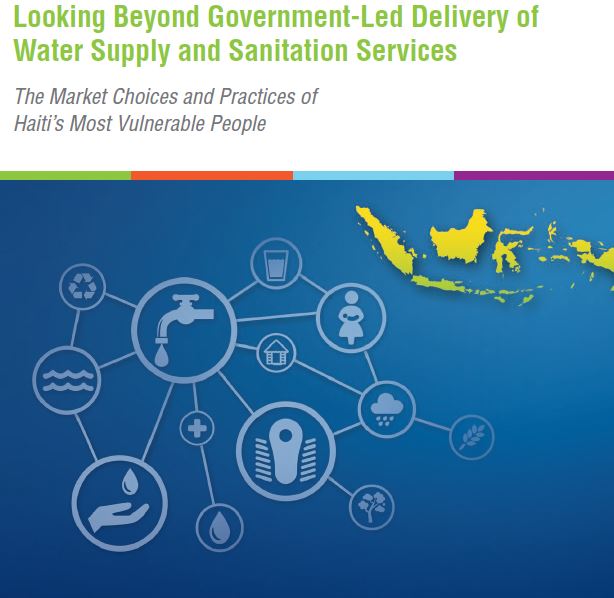Looking Beyond Government-Led Delivery of Water Supply and Sanitation Services The Market Choices and Practices of Haiti’s Most Vulnerable People
Poverty in Haiti remains endemic. Haiti is the poorest country in the Latin America and Caribbean region and among the poorest in the world. Its growth performance over the past four decades has been very low, averaging 1 percent per year, with gross domestic product (GDP) per capita falling by 0.7 percent a year on average between 1971 and 2013. As a result, the overall poverty headcount in 2012 was about 58.5 percent of the population and extreme poverty 23.8 percent,1 meaning that almost 6.3 out of 10.4 million Haitians could not meet their basic overall needs and 2.5 million cannot even cover their food needs. Furthermore, with a Gini coefficient of 0.6, Haiti’s income inequality ranks the highest in the region and among the most unequal in the world. Poor macroeconomic performance and a limited fiscal space restrict government expenditures on public goods. Despite recent improvements in tax collection, Haiti collects less domestic revenue than comparable countries in the region. Of tax revenue, much comes from indirect taxes that affect consumers independent of their income level. In the absence of sufficient public expenditures, the private sector has become the main provider of basic services, placing a substantial financial burden on households and delivering achievements closely linked with income. Nongovernmental organizations (NGOs) are responsible for about 50 percent of total health expenditures, which for the most part are dedicated to deliver primary health-care services. In Education, NGOs or private for-profit institutions run over 80 percent of all primary and secondary schools. Drinking water supply and sanitation (WSS) services are no exception to this trend. Financial resources channeled to the WSS sector fall short of what is needed. In 2014, budget transfers and tariff revenues directed to the WSS sector accounted for US$69 million, equivalent to 0.8 percent of GDP (in comparison, fuel subsidies accounted for 2 percent of GDP during said year). Because of insufficient public investments and poor quality of government-led WSS services, the percentage of Haitians who resorted to the private sector for drinking water increased from 10.9 to 25.8 percent between 2006 and 2012. In urban areas, this percentage was even higher: 57.1 percent in the Port-au-Prince metropolitan area in 2012 and 45.5 percent in other cities of the country. The Haiti WASH Poverty Diagnostic seeks to inform how to maximize the socioeconomic impact of the scarce fiscal resources channeled to the sector. The study assesses the linkages between improved access to water supply, sanitation, and hygiene (WASH) services, poverty, and health outcomes. The diagnostic also provides convincing evidence of the linkages between improved access to WSS and other dimensions affecting the adequate development of children in Haiti, with a focus on stunting. The diagnostic also analyzes the functioning of WSS markets to identify ways to ensure that services delivered by the private sector are both of good quality and affordable. In particular, it focuses on water supply and fecal waste collection, transportation, and treatment services in the Port-au-Prince metropolitan area. This is the largest and most sophisticated WSS market in Haiti, although not the fastest growing. Understanding how this market functions may aid stakeholders in addressing issues and opportunities that may arise in other urban areas in the future, and in structuring successful public-private partnerships to serve rural communities.
